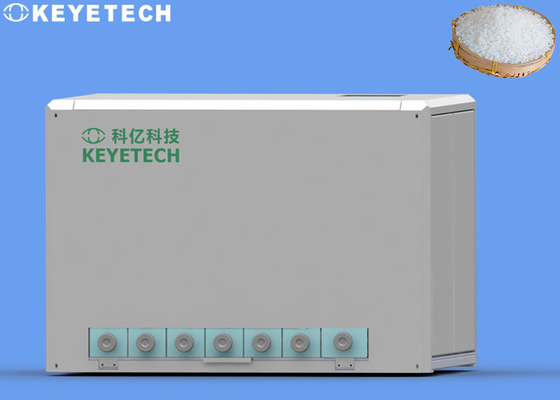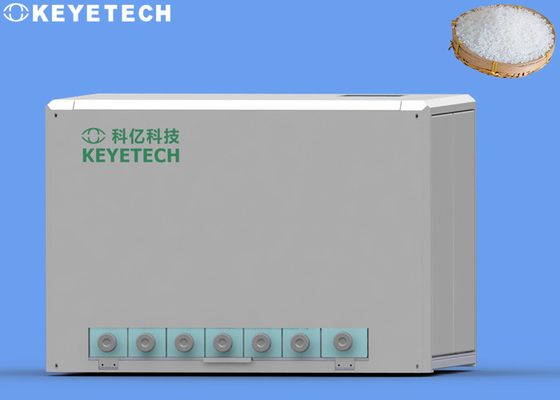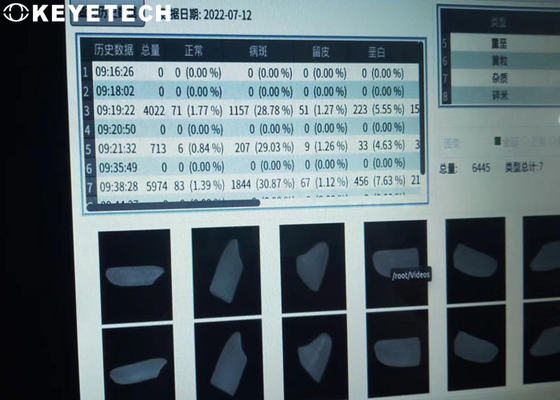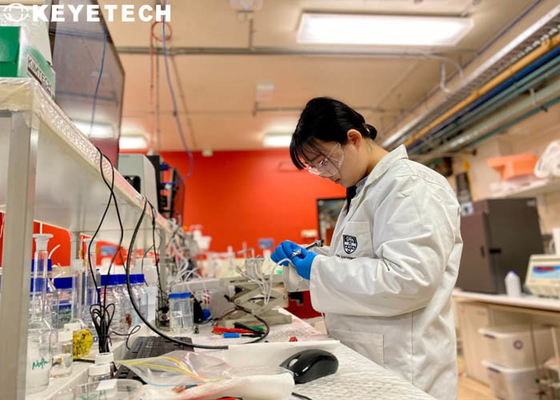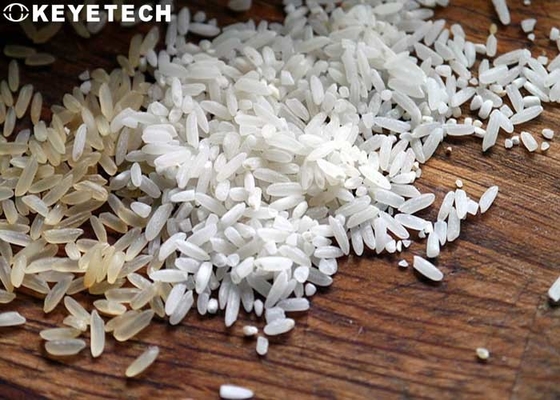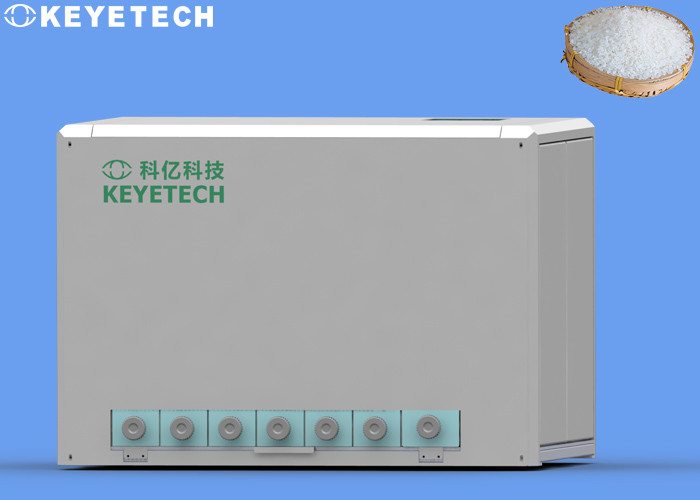Inpection background
The rice quality AI visual diagnostic instrument developed and produced by our company is connected with the rice processing production line, with the rice lifting and conveying pipelines, and the rice is regularly extracted from the conveying pipelines for quality analysis. Detect and analyze the normal grains,germinated grains, heterogeneous buds, grass seeds, chalky grains, insect-eaten grains, gibberella grains, large broken grains, small broken grains, black germ grains, impurities, etc. of rice, and form statistical reports from time to time to improve Product safety and traceability.
The rice quality AI visual diagnostic instrument combines traditional machine vision methods and artificial intelligence algorithms to analyze rice. First, traditional visual methods are used to segment the rice grains in the video frame, and then artificial intelligence algorithms are used to identify the attributes of the divided rice grains and judge Whether there are insect erosion, germination, mold and other problems. At the same time, two high-resolution cameras were used to photograph the front and back of the rice, and the properties of the two sides were analyzed. Through the algorithm, align the front and back of the rice one by one, and combine their respective attributes to synthesize the attributes of a complete rice.
Detection principle
Combine traditional machine vision methods and artificial intelligence algorithms to analyze rice. First, use traditional vision methods to segment the rice grains in the video frame, and then use artificial intelligence algorithms to identify the attributes of the segmented rice grains to determine whether there are insects. Moth, sprouting, mildew and other problems. At the same time, two high-resolution cameras were used to photograph the front and back of the rice, and the properties of the two sides were analyzed. Through the registration algorithm, the front and back of the rice are registered one by one, and their respective attributes are combined to obtain the attributes of a complete rice grain.

Equipment details&key technology
| Model.No |
KVS-GR |
Inspect speed |
500-900/min |
| Size |
800*600*600mm |
Weight |
60kg |
| Voltage |
220V±10%,50Hz |
Current |
500-1000W |
| Ambient temperature |
10~30℃ |
Environment humidity |
Relative temperature≤85%
|
1.Automatic binarization: Use deep neural network to segment the foreground and background of the image, compared with the traditional binarization method, Automatic binarization can be applied to a variety of lighting conditions, and have the advantages of smoother edge of the rice segmentation, fast and robust High.
2.Adhesion rice segmentation algorithm: The connected domain-based method cannot segment adhesion rice. The deep neural network is used to segment the adhesion rice at an instance level, which can reach a speed of l000fps and can process the adhesion rice in real time.
3.Rice properties recognition algorithm: It adopts a lightweight neural network and integrates a semi-supervised learning method. The model can be iteratively optimized only by marking a small amount of data. It has the advantages of high accuracy, fast speed, and convenient deployment.
Advantages of AI algorithm
- AI algorithm: high stability, adapting to the environment and background disturbance; different defect samples can be automatically identified after training
- Dataization: Independent database, save multiple samples, analyze non-good products, and retain history
- Multi-orientation: 360 ° comprehensive inside and outside the samples
- High precision: detection accuracy can be high
- Modularization, can flexibly increase or decrease the detection function according to customer actual needs
- Easy to operate: It is easy to operate and easy to maintain
- Safety: Medical grade material manufacturing, fully compliant with medical supplies production environment
Machining process


 Your message must be between 20-3,000 characters!
Your message must be between 20-3,000 characters! Please check your E-mail!
Please check your E-mail!  Your message must be between 20-3,000 characters!
Your message must be between 20-3,000 characters! Please check your E-mail!
Please check your E-mail! 
